Phase Sequence and Cable Arrangement Configurations
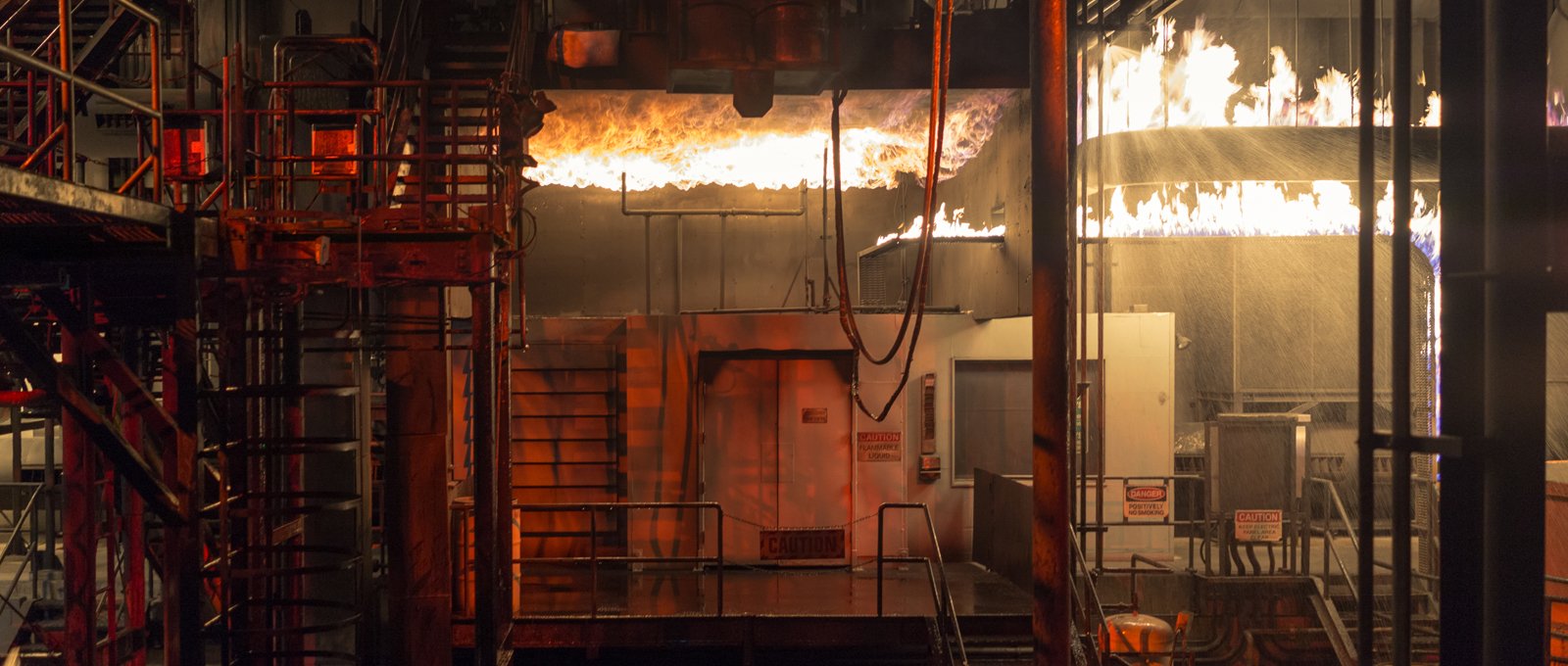
Phase Sequence
and Cable Arrangement Configurations
INTRODUCTION
The power demanded in electricity systems also determines the cable cross-section and properties as well as the current to be transferred. In case of high power use, to meet the demand of currentAnd in order for the current to be carried at the demanded high powers to be met, the method of parallel connection of the cables can be selected. And when this method is selected, multiple cables need to be used for each phase.
The Importance of Phase Sequence and Application Examples
In the event that the right method of application is not selected in projects where multiple cables should be used in the same phase; the impedances between the cables can cause imbalanced current passages through the cables, and the imbalanced currents through the cables (imbalanced current distribution) can cause the cables to go up to different heats and overheating.
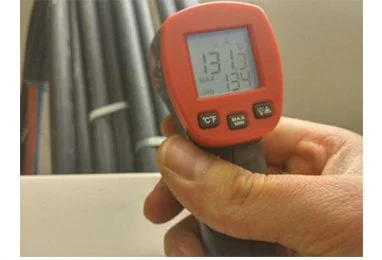
Figure 1: Overheating in the cables
The overheating occurring in the cables cause deformation in the internal insulation and external coating materials of the cables and shortens the cable lifespan. This can also cause stoppage, resupplying of the cables, and disassembly and assembly labors.
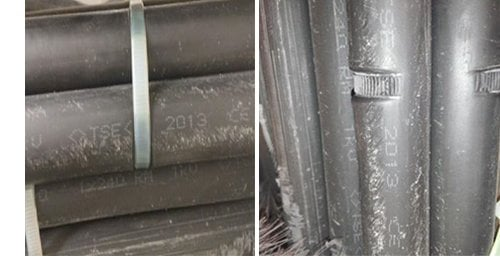
Figure 2: Deformations in the cables
In cases where multiple cables need to be connected parallelly in the same phase; ensuring that the same current goes through all cables is possible by the right phase sequence and the correct arrangement of the cables, given the magnetic field interaction and impedances between the cables.
The phase sequence and the types of arrangement for the cables are also stated in the Electrical High Current Facilities Regulation, the international standards and various resources. In the systems fed with single core cables; the cable arrangement and phase sequences should be applied as stated below in single row sequence.

There are many configurations about the systems that are fed with single core cables. To name a few configurations about these;
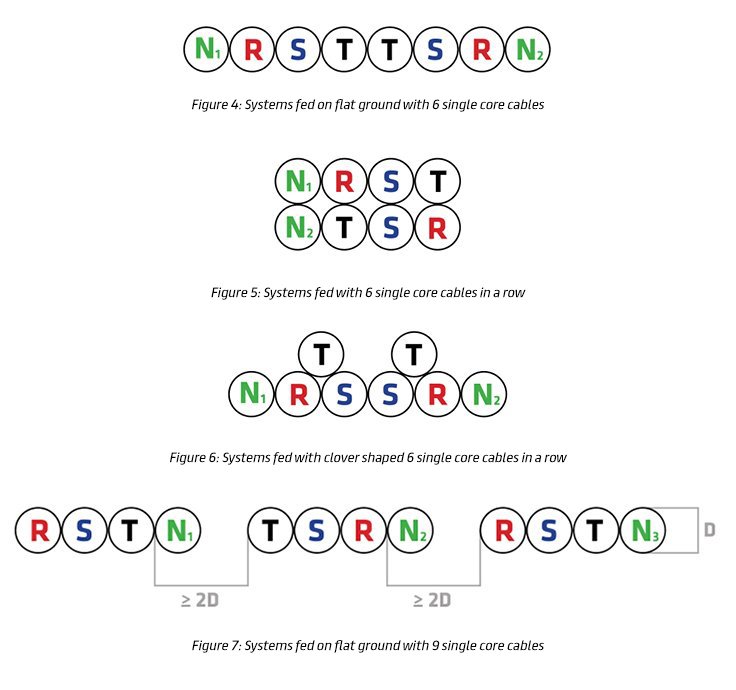
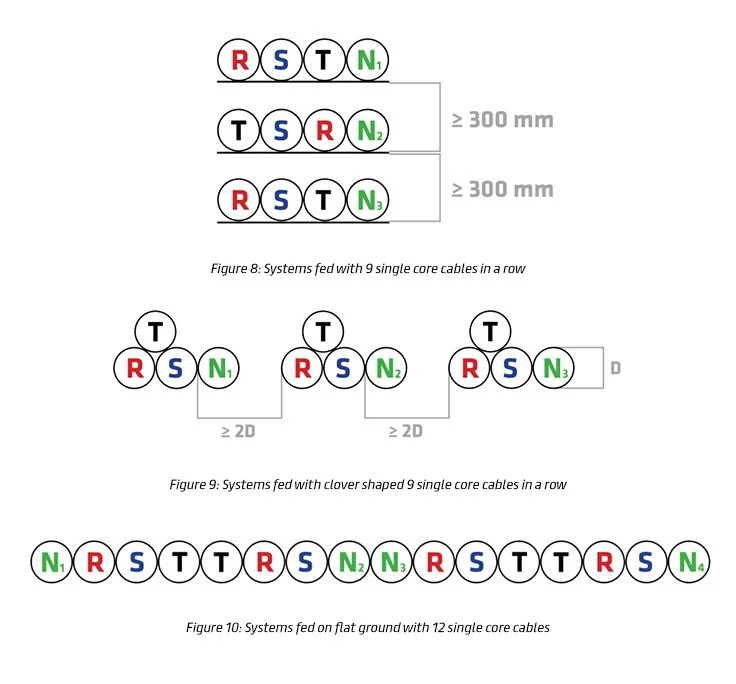
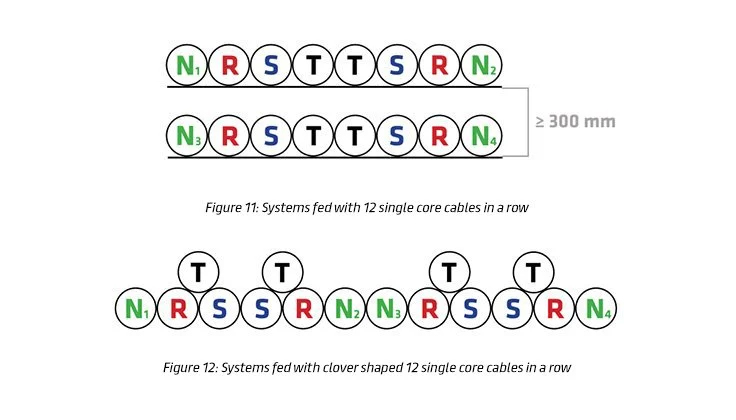
Conclusion
In order to meet the demanded power, the cable’s electrical and mechanical properties as well as the assembly of the cables and their arrangement methods are also crucial points.
In cases where multiple cables need to be parallelly connected to the same phase; in the event that the phase sequence and the arrangement methods are not followed, there might be imbalanced current distributions in the cables that are parallelly connected to the same phase and thus overheating in the cables. This unwanted situation has a negative impact on the lifespan of the cables, and also poses a threat for the facility as well. Ensuring that the balanced current goes through all cables is possible by the right phase sequence and the correct arrangement of the cables, given the magnetic field interaction and impedances between the cables.
Therefore; the phase sequence and the configurations of cable arrangement stated in the Electrical High Current Facilities Regulation and the international standards should be applied.
References
1 Electrical High Current Facilities Regulation
2 IEC 60364-5-52 IEC:2009
3 Heinhold Power Cables and their Application Part 1
Türk Prysmian Kablo ve Sistemleri A.Ş.
e-posta: [email protected]


